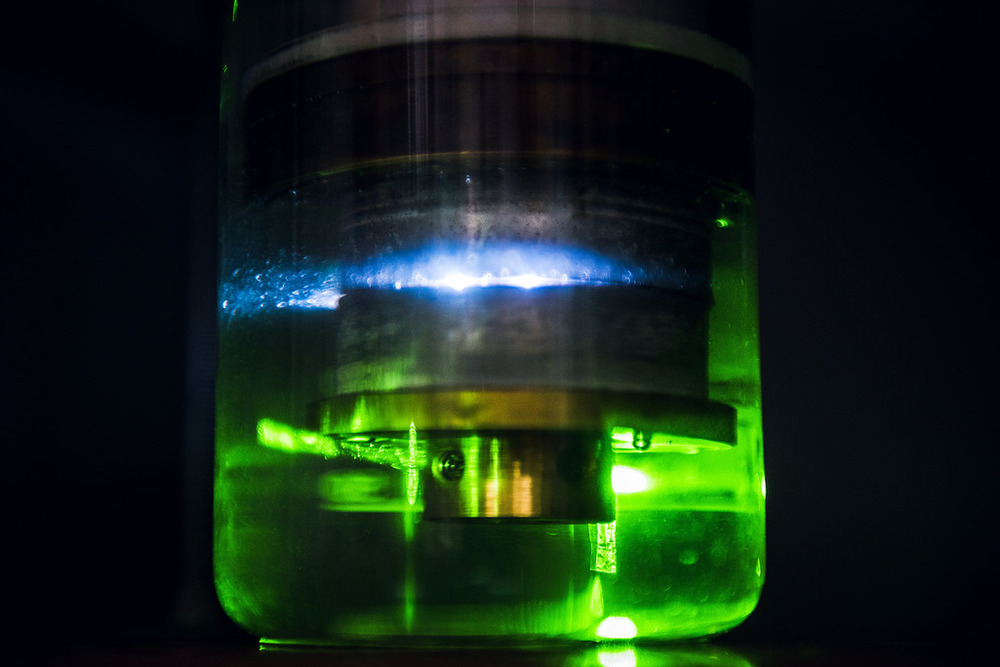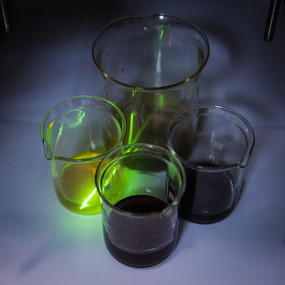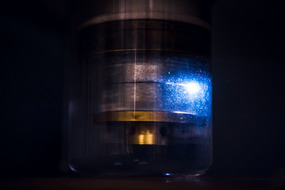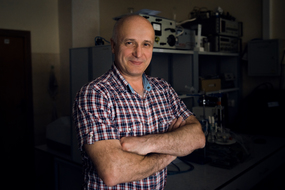NUST MISIS materials scientists led by Georgii Frolov, Associate Professor in the Physical Chemistry department at NUST MISIS, together with specialists from Vyatka State University, have developed a unique composition of a dental rinse which significantly changes the composition of teeth microflora, destroying plaque-causing bacteria by up to 83% while also reducing gingivitis. Clinical testing of the rinse has been carried out on volunteers at the Faculty of Stomatology (Dentistry) at Kirov State Medical Academy.
Today, dentists actively solve the problem of cavity prevention with the use of solutions without fluorine (excess amounts of NaF is harmful both for teeth and the body). At the same time, a toothbrush with toothpaste cleans a maximum of only 61% of plaque on lingual, chewing and buccal surfaces. Not many patients use dental floss due to a lack of time. Rinses are becoming more popular because their particles reach into spaces between teeth. NUST MISIS scientists, in partnership with medical experts, have developed a new type of oral rinse based on nanoparticles of metals, which with regular use inhibits the growth of pathogenic bacteria in tooth cavities by 83%, thus reducing the risk of developing caries and periodontitis.
The NUST MISIS scientists, led by Georgii Frolov, an Associate Professor in the Physical Chemistry department at NUST MISIS, teamed up with Vyatka State University to conduct a series of experiments on cultures of dental plaque bacteria. Within the first 24 hours, the inhibition of plaque bacterial growth occurred while using different solutions of metal nanoparticles.
„The death of a cell’s pathogen microorganism occurs as a result of the chemical destruction of various cell walls and membranes, including membranes of cell organelles. The chemical destruction occurs as a result of a dispersive system interaction, ‚magnetite in aqueous solution of cetylpyridinium chloride’ with biopolymers of microbe cells. As a result of this, the lysis (withdrawal) of the content happens out into the environment. Apparently, oxide nanoparticles of metal are biocatalyzers of hydrolyses ferments of peptide and glycosidic bonds in polymer molecules of cell walls and membranes. Sometimes, the intensity of bacterial and bacteriostatic properties significantly exceeds the action of antibiotics in regard to Staphylococcus aureus and the majority of coccus” — said Svetlana Gromova, Candidate of Medical Sciences, co-author of the project, and head of the Faculty of Stomatology (Dentistry) at Kirov State Medical Academy.
Clinical testing of the rinse was carried out on volunteers at the Faculty of Stomatology (Dentistry) at Kirov State Medical Academy, with measurements of hygienic and periodontal indexes before the first application of the rinse, and again after 14 and 30 days of use. The experiments revealed the sensitivity of plaque to various solutions containing oxide nanoparticles of metals obtained in an innovative way in the University`s laboratory. The decrease of anti-inflammatory properties was microbiologically proved. Penetration of the solution into spaces between teeth, where the bristles of a toothbrush can’t access, was witnessed. Clinical studies showed the reduction of the sticking (adhesion) of microorganisms on tooth surface by 20%. During the experiments, despite further dilution of the solution (1:100), the amount of fungal flora continued to reduce up to the 30th day, which indicates the Ph normalization of the oral solution.
Georgii Frolov, head of the science team, talked about the experiment’s scientific findings: „Colloidal solutions of oxides of metals are non-toxiс for humans. At the same time, being a source of micro-elements, they exhibit long-lasting antibacterial properties against microorganisms of plaque. During the studies, we noted that while using a rinse based on oxides of metals, the amount of soft plaque on the surface of teeth significantly reduces (up to 83%), as well as the amount of pathogenic flora until its full elimination. Gingivitis reduces accordingly. All the processes were expressed at a dilution of 1:10. Solutions with a content of nanoparticles are recommended to use for oral rinses in combination with traditional personal hygiene products”.
Currently, the first pilot batches of preparation have been created in a NUST MISIS lab, and developers are engaged in registration of the composition and official patenting it as a rinse.






